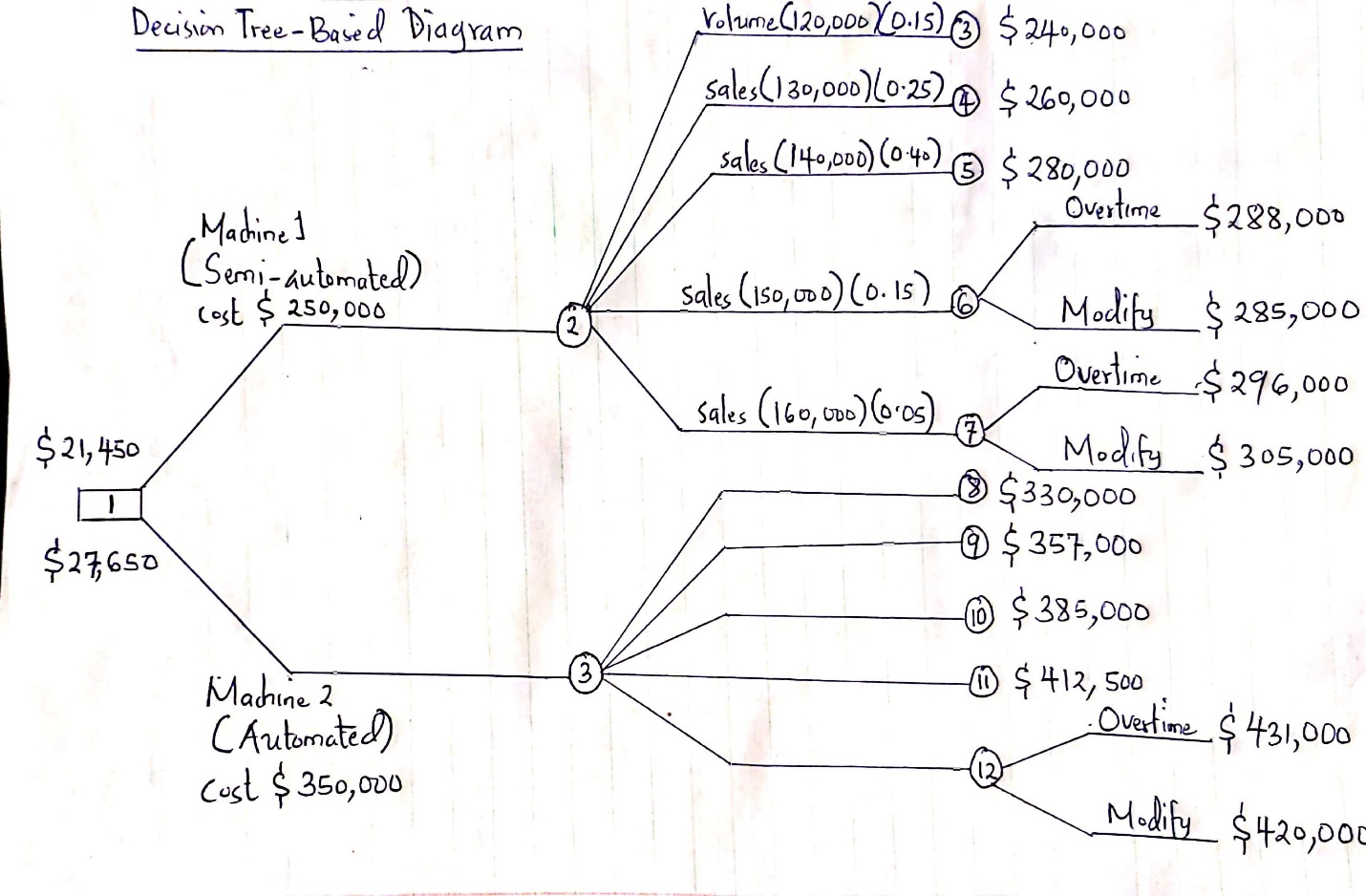
Machine 1 (Semi-automated)
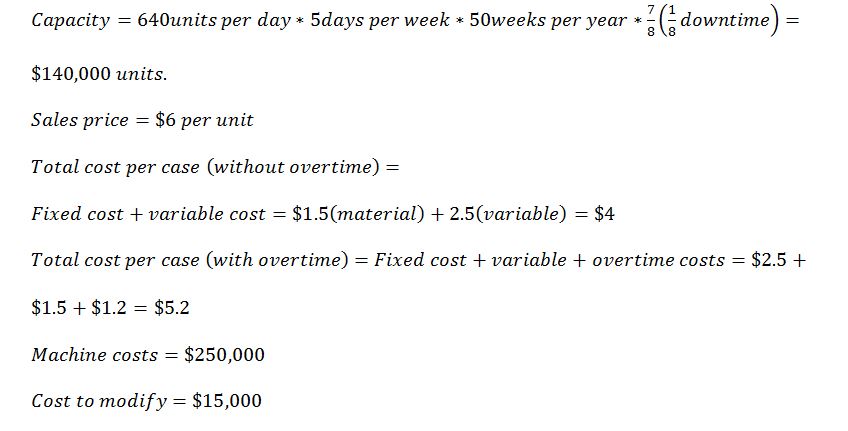
Table 1: Nodes Calculation for Machine 1 (Semi-automated)
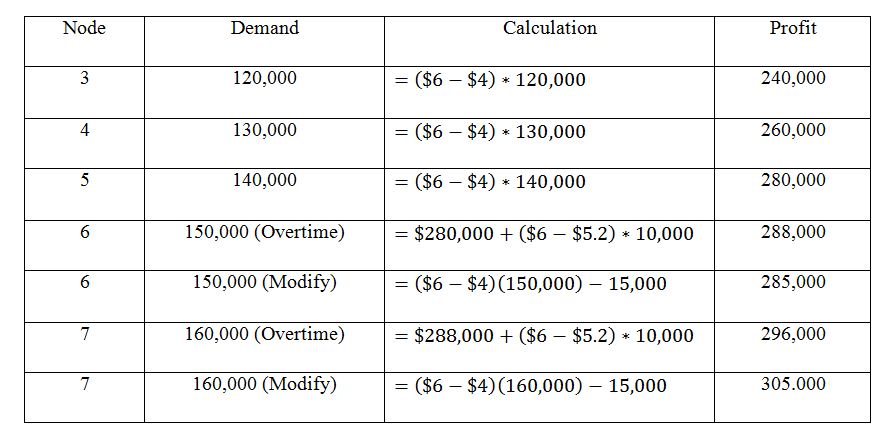
Machine 2 (Automated)
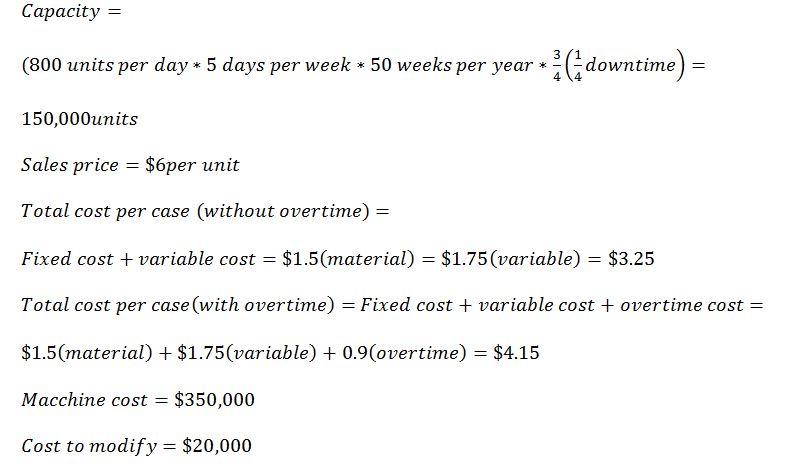
Table 2: Nodes Calculation for Machine 2 (Automated)
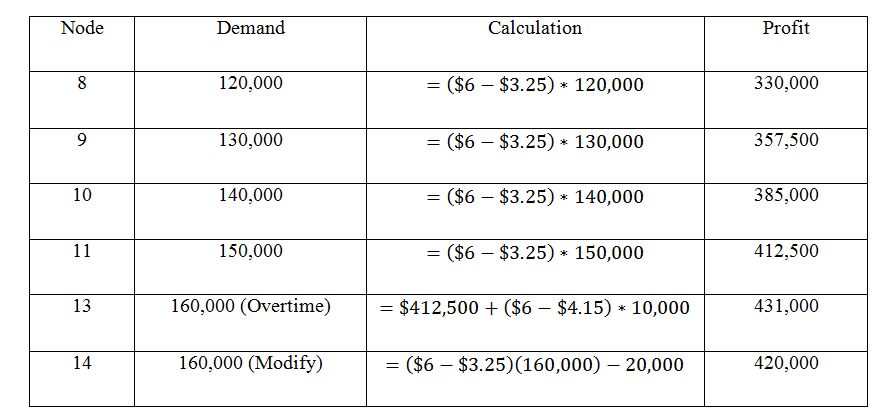
Nodes Calculation:
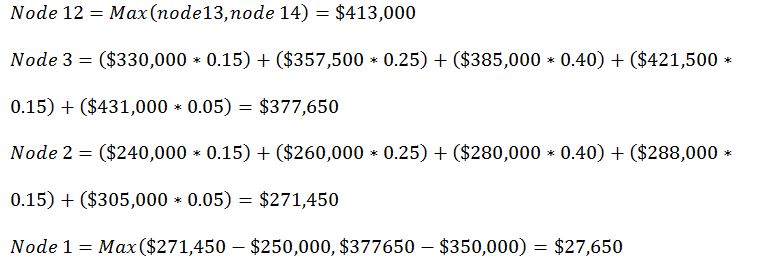
From the above calculations, the preferred machine should be machine 2, which is automated. Additionally, overtime should be scheduled for the machine because it generates more profits; thus, no modifications are required.
Consider a circumstance in which a person is required to choose from a collection of feasible choices. Each decision results in an unknown reward, which varies according to the option chosen and some unpredictable outcome. In classical probabilistic reasoning, corporations are urged to invest in enterprises that generate the greatest predicted benefit if they have access to probabilities for all actual occurrences (Nakharutai et al., 2021). From the case scenario, two devices are provided in the question that can be regarded as variables of x and y, and the constants for both functions are presented, which yields the two equations in x and y. By employing order derivatives, estimations of the derivatives of the parameters supplied can be obtained, and by setting them to zero, the maximin and maximax values can be derived (Nakharutai et al., 2021). Alternatively, the conclusion is an equally likely criterion if the deviation is zero. The table below provides a payoff matrix table that Toledo Leather Company can use in making decisions about the two machines.
Table 3: Payoff Matrix Table
Using the maximin, the company should select the automated machines as it provides the highest value, that is, $330,000. Likewise, in deciding which machine to select using the maximax, the corporation’s best choice would be machine 2 (automated), as it yields a larger value of $431,000 compared to machine 1’s $296,000.
References
Nakharutai, N., Troffaes, M. C., & Caiado, C. C. (2021). Improving and benchmarking of algorithms for Γ-maximin, Γ-maximax and interval dominance. International Journal of Approximate Reasoning, 133, 95-115. Web.